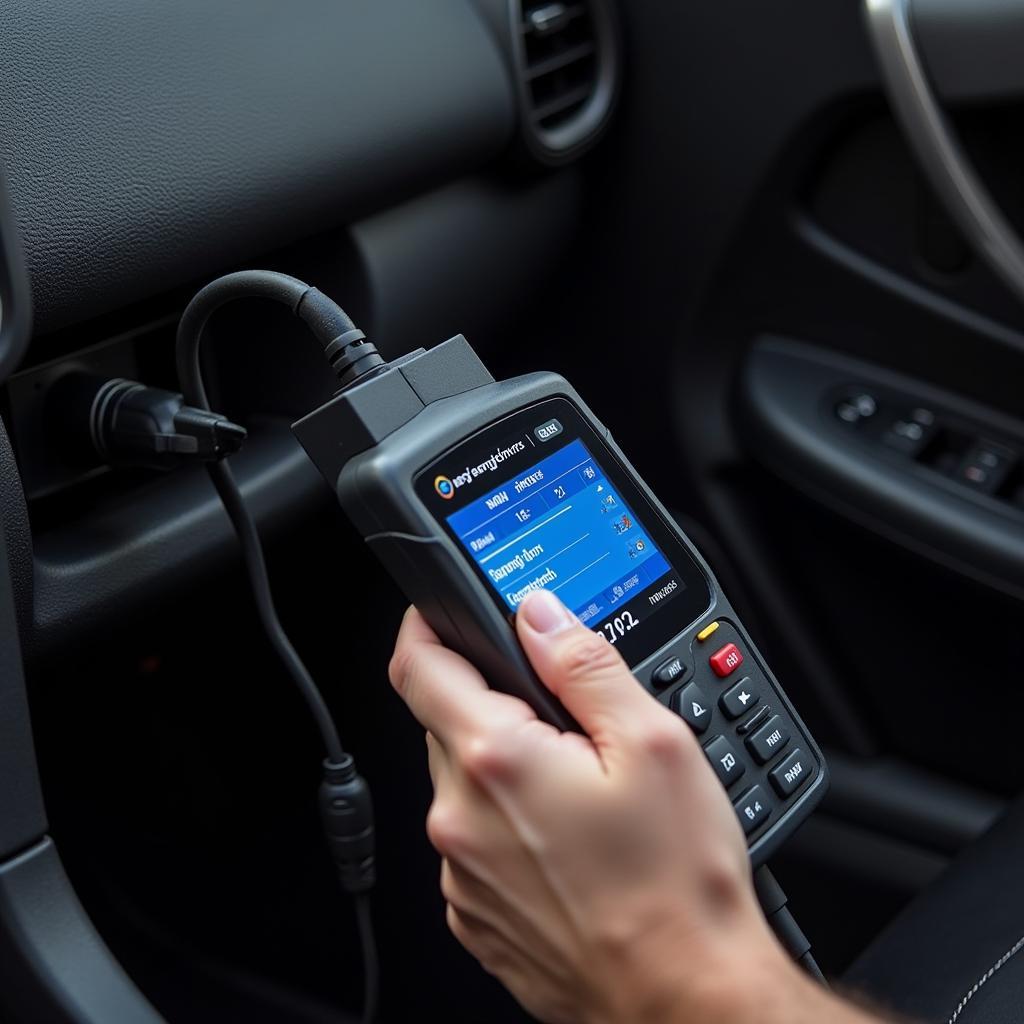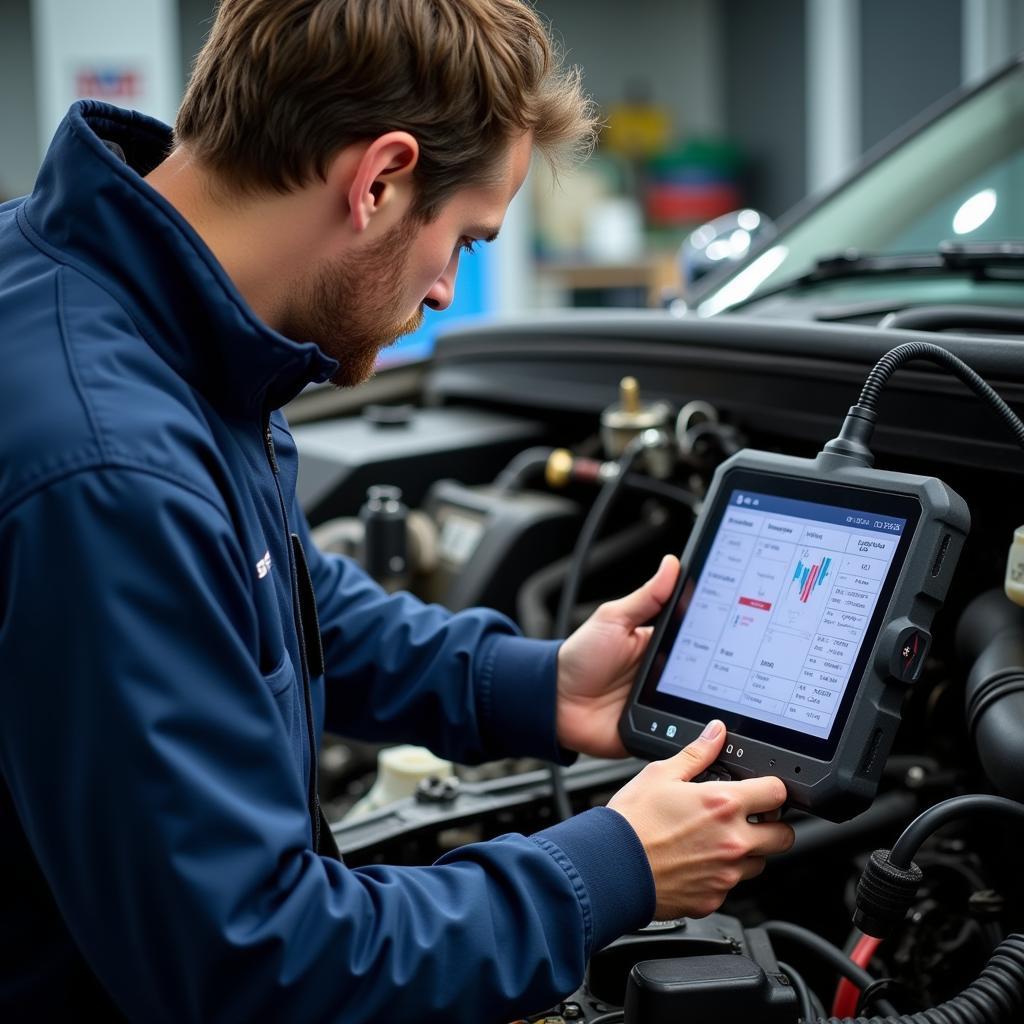Finding the right car diagnostic tool in Australia can be a real headache, especially with so many options flooding the market. Whether you’re a seasoned mechanic or a car enthusiast looking to troubleshoot your own vehicle, having the best car diagnostic tool for your needs is essential. This guide will help you navigate the ins and outs of these handy devices and empower you to make an informed decision.
What is a Car Diagnostic Tool and Why Do You Need One?
A car diagnostic tool is like a window into your vehicle’s computer system. It allows you to communicate with the on-board computer, retrieve diagnostic trouble codes (DTCs), and monitor various vehicle parameters in real-time. Think of it as a translator between you and your car, helping you understand what’s going on under the hood.
Why are these tools so important?
- Identify problems early: A diagnostic tool can catch issues before they become major headaches, saving you time, money, and potential breakdowns.
- DIY repairs: For the mechanically inclined, these tools empower you to diagnose and potentially fix some issues yourself.
- Informed decisions: When you take your car to a mechanic, having your own diagnostic data can help you understand the problem and make informed decisions about repairs.
Types of Car Diagnostic Tools Available in Australia
The Australian market offers a diverse range of car diagnostic tools, each catering to different needs and budgets. Let’s break down the most common types:
1. Basic Code Readers
Ideal for: Car owners looking to read and clear basic engine fault codes.
As the name suggests, these tools are entry-level options that focus on retrieving and clearing DTCs. They are generally affordable and user-friendly, making them suitable for beginners.
2. OBD2 Scanners
Ideal for: Car owners and DIY enthusiasts who want more in-depth diagnostic information.
OBD2 scanners offer a step up from basic code readers. They can access a wider range of data from your car’s computer, including live sensor data, emissions readiness status, and freeze frame data, which captures a snapshot of vehicle parameters when a fault code is stored.
 OBD2 Scanner
OBD2 Scanner
3. Professional-Grade Scan Tools
Ideal for: Mechanics and professional workshops requiring advanced diagnostic capabilities.
These high-end tools provide comprehensive coverage for multiple vehicle makes and models. They can perform complex diagnostics, programming, and coding, making them indispensable for professional technicians.
4. Mobile Device-Based Tools
Ideal for: Users seeking convenience and portability.
These tools connect to your smartphone or tablet, leveraging the device’s processing power and display capabilities. They typically offer a wide range of features and can be a cost-effective option.
Key Factors to Consider When Choosing a Car Diagnostic Tool
With so many options available, selecting the right tool can be daunting. Here are some crucial factors to consider:
1. Vehicle Compatibility:
This is paramount! Ensure the tool you choose supports the make, model, and year of your vehicle (or the vehicles you work on). Some tools specialize in specific car brands, while others offer broader coverage.
2. Features and Functions:
Consider what you need the tool to do.
- Do you just need to read and clear codes?
- Do you want live data streaming?
- Do you need advanced functions like coding or programming?
3. User Interface and Ease of Use:
Choose a tool with a clear and intuitive interface that aligns with your technical expertise.
4. Software Updates:
Regular software updates are crucial for ensuring compatibility with the latest vehicle models and accessing new features. Consider the update frequency and cost when making your decision.
5. Budget:
Car diagnostic tools range in price from affordable to quite expensive. Set a budget that aligns with your needs and the tool’s features.
Top Tips for Using Your Car Diagnostic Tool Effectively
- Familiarize yourself with the tool: Read the manual and explore its features before diving into diagnostics.
- Locate your OBD2 port: This standardized port is usually located under the dashboard on the driver’s side.
- Start with the basics: Begin by reading and understanding any stored fault codes.
- Research and interpret codes: Use online resources or repair manuals to decipher what each code means for your specific vehicle.
 Mechanic Using Diagnostic Tool
Mechanic Using Diagnostic Tool
Don’t Let Car Troubles Slow You Down
Investing in one of the best car diagnostic tools in Australia can be a game-changer for both car owners and professionals. It’s an investment in your peace of mind and potentially a significant money-saver in the long run. By understanding the different types of tools, key features, and your specific needs, you can confidently choose the perfect diagnostic companion for your automotive adventures.
Need help finding the right tool? Our experts at ScanToolUS are here to guide you. Contact us at +1 (641) 206-8880 or visit our office at 1615 S Laramie Ave, Cicero, IL 60804, USA.


